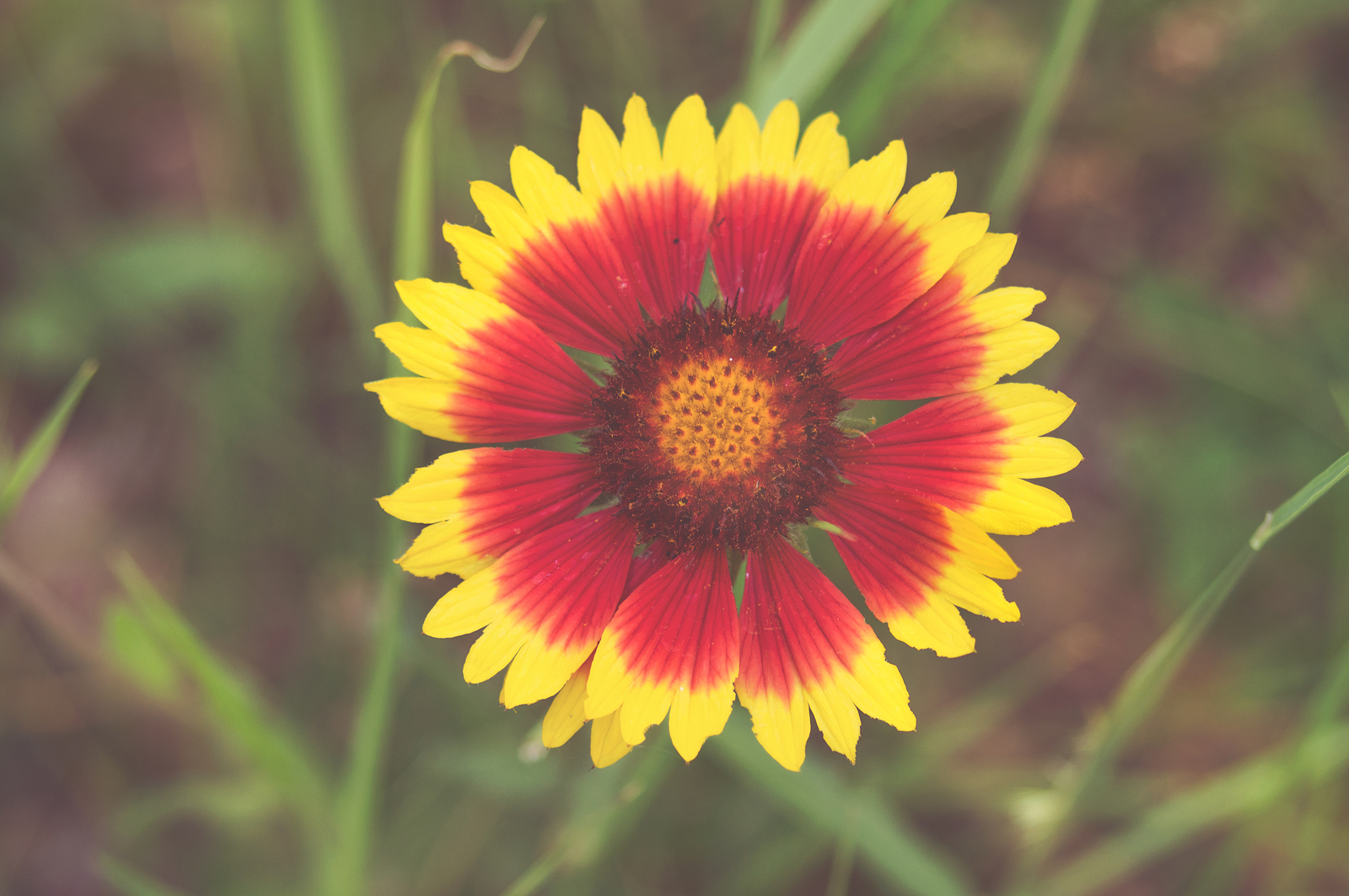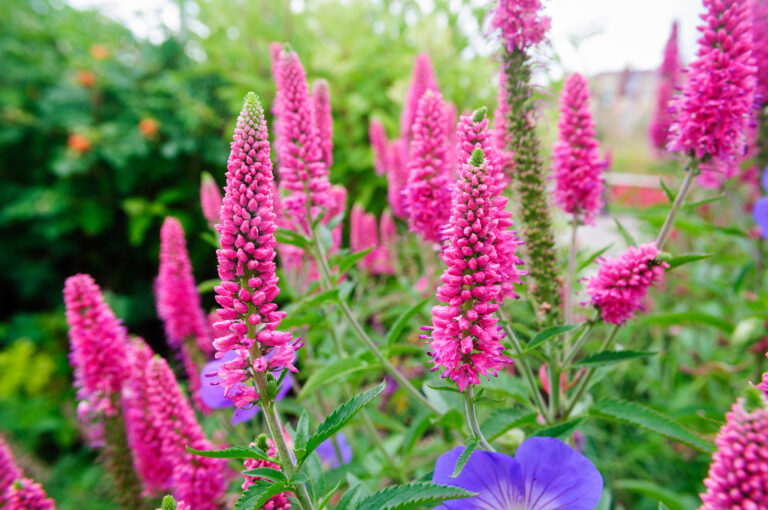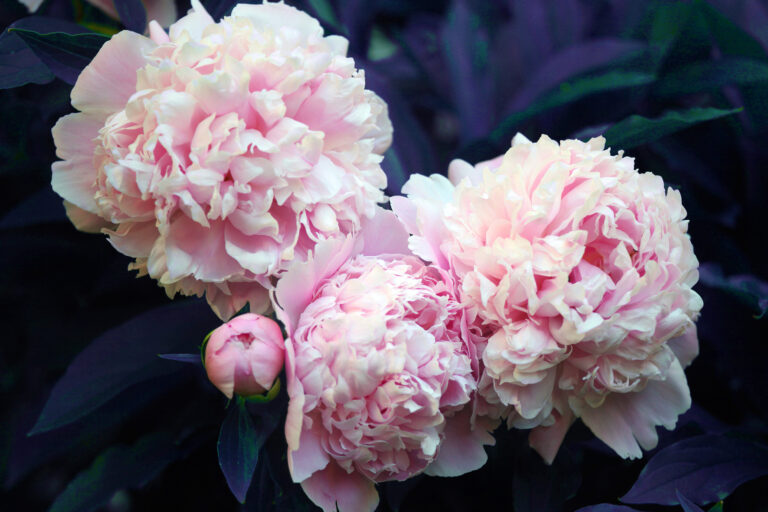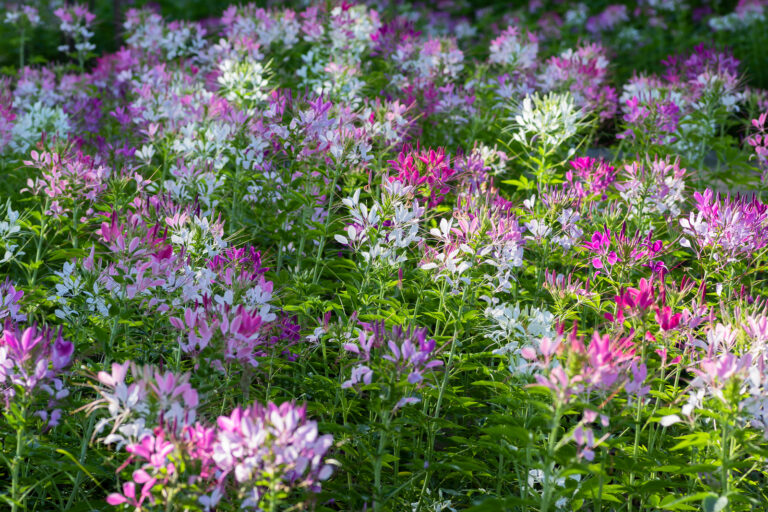How to Grow Blanket Flower — Gaillardia
Gaillardias are short-lived perennials and annuals grown for their long-lasting brightly colored daisy-like flowers that appear from summer into early fall. Gaillardias bear single and double flowers in shades of red, red-orange, maroon, and yellow.
There are about 30 species of Gaillardias. They are native to central and western North America. Most Gaillardias grown in gardens are hybrids developed to bear large blooms, 3 to 5 inches (7.6-12cm) wide.
Good Products for Garden Health at Amazon:
- Garden Safe Snail and Slug Bait
- Bonide Sulfur Fungicide
- Monterey BT Caterpillar Killer
- Neem Bliss 100-% Cold Pressed Neem Oil
- PyGanic Botanical Insecticide
Gaillardias are members of the Aster family. They bear rosettes of hairy leaves topped by single or double daisy-like flowers. Perennial Gaillardias commonly live for three to five years.
Gaillardias are easy to grow from seed. They are a colorful choice for borders and cutting. They often reseed.
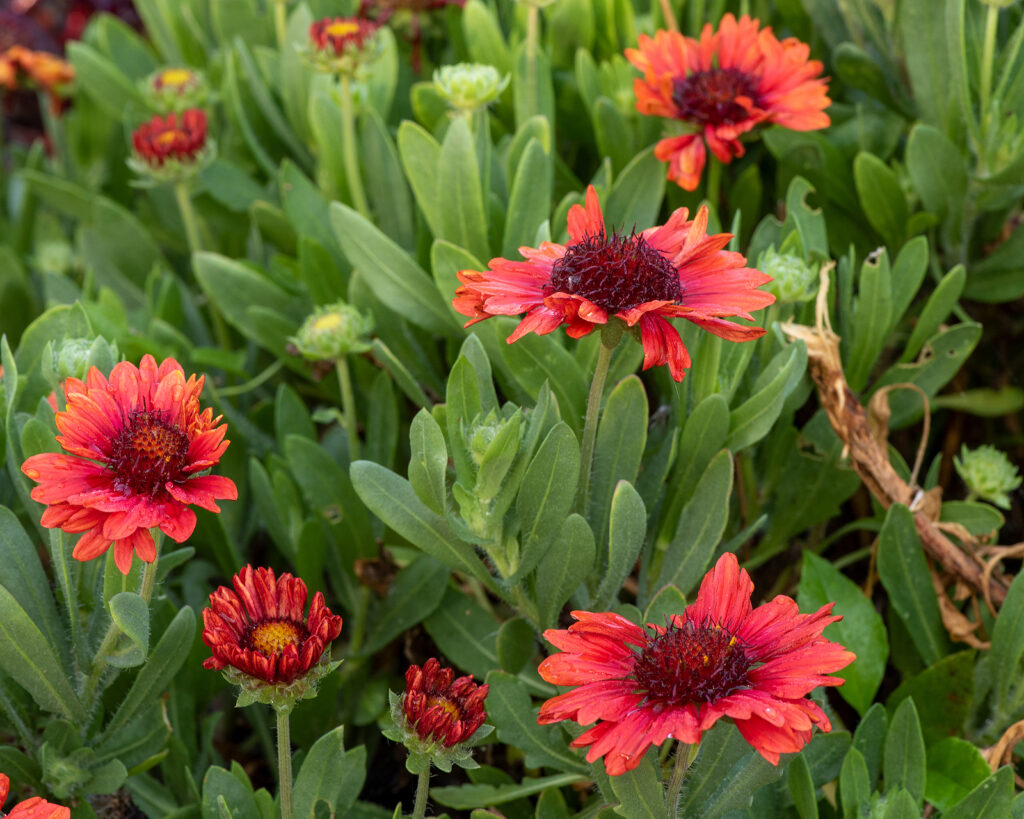
Gaillardia (Blanket Flower) Overview
Gaillardia, commonly known as Blanket Flower, is a cheerful, sun-loving perennial (or annual, depending on the variety) known for its daisy-like flowers in fiery shades of red, orange, and yellow. Its blooms often feature a blend of these colors, resembling the vivid patterns of Native American blankets—hence the name. Gaillardia is native to North and South America and thrives in hot, dry climates, making it a popular choice for drought-tolerant gardens.
These hardy plants are typically compact, growing to heights of 12–24 inches, with a similar spread. They are long-blooming, flowering from late spring to early autumn, and are loved by pollinators like bees and butterflies.
Eight Ways to Use Gaillardia in the Garden
- Borders and Edging
- Gaillardia is perfect for the front of sunny borders, where its bright blooms add color and texture.
- Use it as an edging plant along garden paths or walkways for a vibrant display.
- Pollinator and Wildlife Gardens
- Blanket Flowers attract bees, butterflies, and even hummingbirds. Plant them in pollinator-friendly gardens alongside other nectar-rich plants like salvia and echinacea.
- Rock Gardens
- Their ability to thrive in poor, sandy soils makes them excellent for rock gardens. Combine them with succulents, ornamental grasses, or creeping sedums.
- Cutting Gardens
- Gaillardia makes excellent cut flowers for informal arrangements. Regularly harvesting blooms also encourages the plant to produce more flowers.
- Containers and Raised Beds
- Compact varieties of Gaillardia work well in containers, adding a splash of color to patios, balconies, or small spaces.
- Raised beds provide the well-drained soil conditions that Gaillardia loves.
- Cottage Gardens
- Their informal, cheerful blooms fit beautifully in cottage gardens. Combine them with hollyhocks, daisies, or coreopsis for a relaxed, whimsical look.
- Meadow and Prairie Plantings
- Gaillardia’s vibrant flowers are ideal for naturalized or wildflower gardens. Pair them with grasses and other drought-tolerant plants like black-eyed Susans and liatris.
- Low-Maintenance Gardens
- Since Gaillardia thrives in poor soils and requires little care, it’s perfect for xeriscaping or low-maintenance garden designs.
Design Ideas with Gaillardia
- Colorful Contrasts
- Pair Gaillardia’s warm-toned flowers with blue or purple blooms, such as lavender, Russian sage, or agapanthus, for a striking contrast.
- Sunset-Themed Gardens
- Use Gaillardia alongside plants like orange marigolds, golden rudbeckia, and scarlet zinnias to create a “sunset” color scheme.
- Mass Planting for Impact
- Plant Gaillardia in large drifts or clusters to create a bold, eye-catching display of fiery color in a sunny area.
- Wildflower Combinations
- Combine Blanket Flowers with plants like coneflowers, yarrow, and lupines for a vibrant wildflower meadow.
- Container Mixes
- Mix Gaillardia with trailing plants like calibrachoa or sweet potato vine in containers for a layered effect.
- Seasonal Highlights
- Use Gaillardia as a focal point in summer and fall gardens, where its long-lasting blooms provide consistent color.
Quick Care Tips for Gaillardia
- Light: Thrives in full sun but tolerates light shade in hotter climates.
- Soil: Prefers well-drained, sandy or poor soils. Avoid heavy clay or overly rich soil, as these can cause leggy growth.
- Watering: Drought-tolerant once established. Water sparingly and avoid waterlogged conditions.
- Deadheading: Regularly remove spent blooms to prolong flowering.
- Fertilizing: Typically does not require fertilizer. Over-fertilizing can reduce flowering.
- Pruning: Cut plants back by about one-third in late summer to encourage fresh blooms.
- Pests and Diseases: Gaillardia is generally pest-free but may occasionally encounter mildew or fungal issues in overly humid conditions. Ensure good air circulation.
- Propagation: Divide clumps every 2–3 years in spring or collect seeds in autumn for replanting.
Seasonal Notes
- Gaillardia is a summer-blooming plant that often continues into fall with regular deadheading.
- In colder climates, it may need winter mulch for protection, but many varieties are hardy perennials.
Get to know Gaillardia
- Plant type: Annuals and perennials
- Growing Zones and range: Zones 2 to 10
- Hardiness: Hardy to -35°F (-37°C); thrives in hot, warm, or cold climates
- Height and width: 10 to 36 inches (25-91cm) tall; 10 to 24 inches (25-61cm) wide, depending on the variety
- Foliage: Toothed or lobed slightly hairy leaves from basal rosettes
- Flowers: Daisylike, disk florets flowers
- Flower colors: Red, orange, yellow, and bicolors; double and semi-double blooms
- Bloom time: Summer through frost
- Uses: Beds, borders, wildflower gardens, and containers; seaside gardens (salt-tolerant), hillsides, raised beds, parking areas, sunny walkways, patios, and bare and dry spots (drought-tolerant)
- Common name: Blanket Flower, gaillardia
- Botanical name: Gaillardia spp.
- Family: Asteraceae
- Origin: North America
Where to plant Gaillardia
- Plant Gaillardia in full sun—tolerates heat and drought.
- Gaillardia grows best in average well-drained soil; poor, dry, and sandy soil is not a problem. Blanket flower prefers drier soil.
- Soil too rich will cause plants to be floppy.
- Gaillardia is drought and salt-tolerant.
- Gaillardia prefers a soil pH of 6.1 to 6.5.
Gaillardia uses and companions
- Mass Gaillardia for a colorful effect.
- Use Gaillardia in a cottage and informal gardens.
- Gaillardia can be included in wildflower plantings.
- Gaillardia is best matched with other hot-colored flowers.
- Good garden companions for Gaillardia are Achillea, Coreopsis, Hemerocallis, Linum, Solidago, and ornamental grasses.
When to plant Gaillardia
- Plant Gaillardia in spring; perennial varieties can be planted in fall.
- Sow seeds of annual Gaillardias indoors 6 to 8 weeks before the last frost in spring.
- Sow seed outdoors after the last frost. Gaillardia is easy to grow from seed.
- Set container-grown Gaillardia in the garden in spring and autumn.
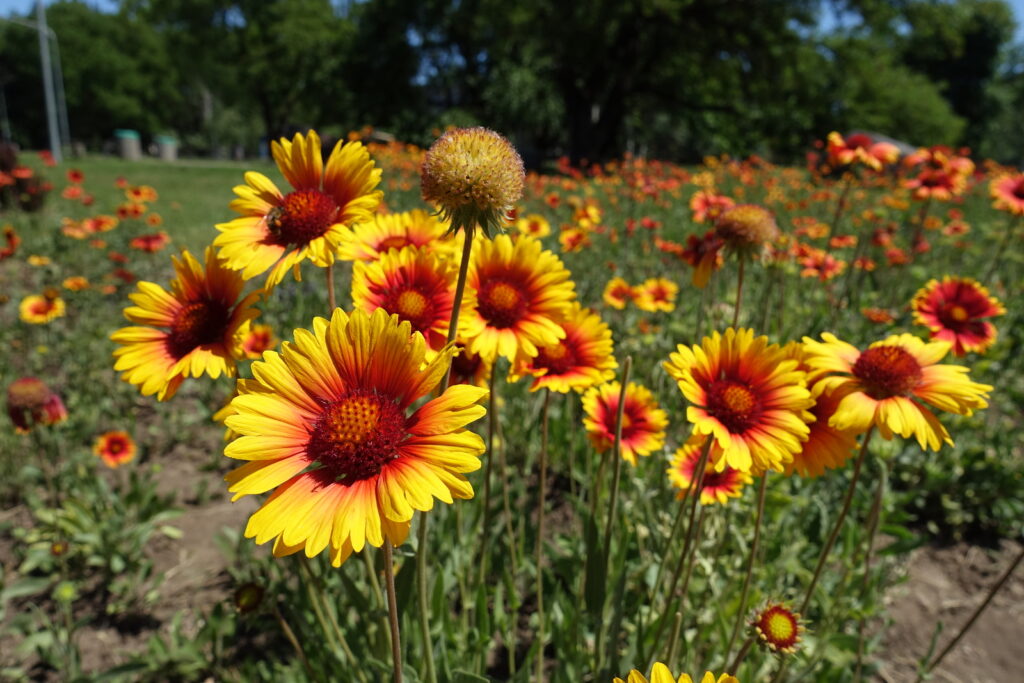
Planting and spacing Gaillardia
- Sow seed indoors 1/8 inch deep in sterile seed starting mix or potting soil. Light aids germination, so gently press the seeds into the soil surface.
- Sow seed outdoors in evenly prepared soil.
- Space Gaillardia 1 to 2 feet (30-61cm) apart.
How to water and feed Gaillardia
- Water Gaillardia until the soil is deeply moist, then allow the soil to dry before watering again. Allow the soil to dry between watering.
- Established plants can tolerate dry soil.
- Fertilize Gaillardia lightly if at all. Use an all-purpose fertilizer.
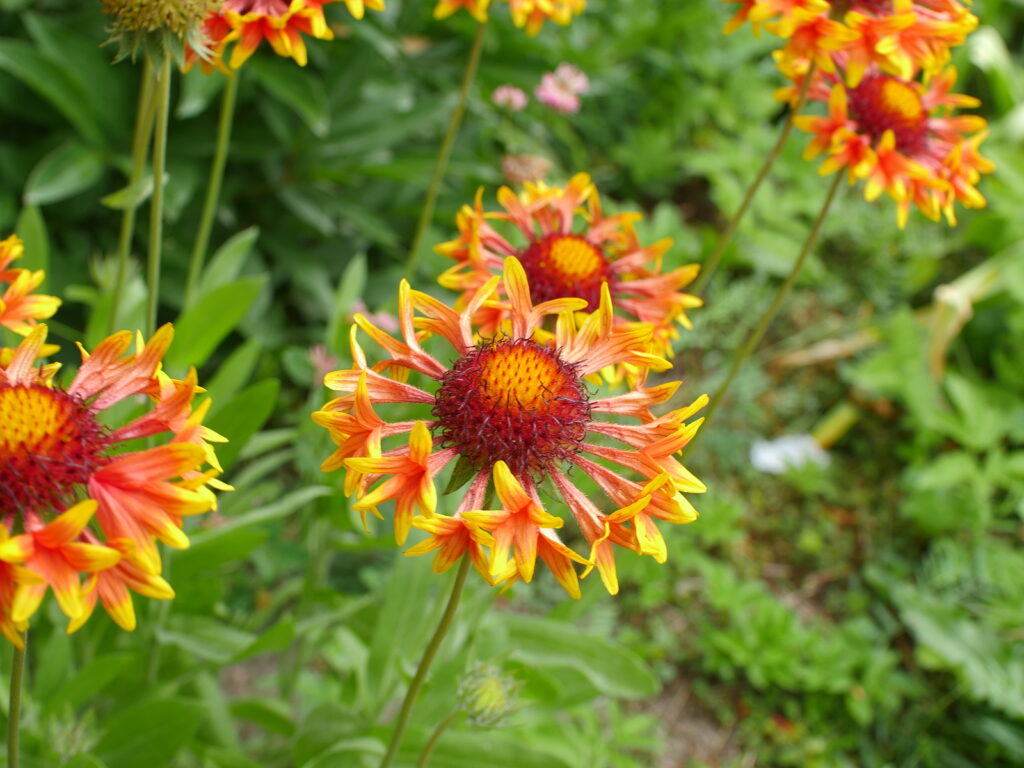
Gaillardia care
- Trim Gaillardia spent blooms to keep the plant blooming.
- Taller plants may need staking.
- Gaillardia easily re-seeds itself so remove plants you don’t want.
Gaillardia pests and diseases
- Gaillardia is prone to powdery mildew and leafhoppers.
- Gaillardia is susceptible to crown rot in wet conditions.
- Downy mildew may attack the undersides of leaves causing them to turn yellow.
Gaillardia propagation
- Propagate Gaillardia by seed (see above), division, or stem cuttings taken in early summer.
- Seeds germinate in 14 to 21 days at 55°-64°F (13°-18°C).
- Propagate by rooting cuttings taken in winter. Grow cuttings in a cold frame before planting them in the open garden in spring.
- Divide perennial Gaillardia every 2 to 3 years in early spring.

Gaillardia varieties to grow
- G. aristata, blanket flower: Perennial wildflowers can grow to 30 inches (76cm) tall and spread to 24 inches wide; 4-inch-wide flowers with red-orange centers and yellow petals with lobes at the tips; blooms summer to fall.
- G. x grandiflora, blanket flower: Short-loved perennial to grow in Zones 2-10; grows 24 to 36 inches (60-91cm) tall; 3 to 5 inch wide flowers in a combination of reds, Maroon,s oranges, and y3llo2w from early summer to fall; dwarf cultivars grow 8 to 16 inches (20-40cm) tall.
- G. pulchella, blanket flower: Annual grows to 18 inches (45cm) tall; bears red, yellow, or red and yellow daisylike flowers to 2 inches wide with purple-black centers from summer to fall; grows in Zones 2-11. ‘Red Plume’ is an All-America Selection with dwarf habit and extended bloom time; ‘Yellow Sun’ produces dense mounds of foliage and bright yellow flowers.
Gaillardia frequently asked questions
Q: What conditions do Gaillardia like?
A: Gaillardia likes hot sun and dry soil. It needs very little fertilizer. It actually prefers infertile soil.

